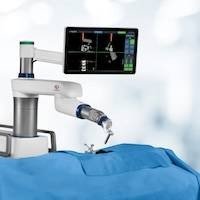Head and neck cancers (other than nasopharyngeal carcinoma) include cancers in the larynx, throat, lips, mouth, nose, and salivary glands.
There are more than 794 new cases of head and neck cancers (other than nasopharyngeal carcinoma) in Hong Kong in 2019. 52% cases were diagnosed at the age of 65 or above. The male to female incidence ratio was 1.9 :1.
Risk Factors
- Genetic factors. Some genetic disorders, such as Fanconi anemia, can increase the risk of developing precancerous lesions and cancers early in life. Asian ancestry, particularly Chinese ancestry, is a risk factor for nasopharyngeal cancer.
- Infection with cancer-causing types of human papillomavirus (HPV), especially HPV type 16, is a risk factor for oropharyngeal cancers that involve the tonsils or the base of the tongue.
- Tobacco and alcohol use are the two most important risk factors for head and neck cancers, especially cancers of the oral cavity, hypopharynx, and voice box
- Paan (betel quid). The use of paan (betel quid) in the mouth, a common custom in Southeast Asia, is strongly associated with an increased risk of mouth cancers
- Occupational exposure. Occupational exposure to wood dust is a risk factor for nasopharyngeal cancer. Certain industrial exposures, including exposures to asbestos and synthetic fibers, have been associated with cancer of the voice box, but the increase in risk remains controversial. People working in certain jobs in the construction, metal, textile, ceramic, logging, and food industries may have an increased risk of cancer of the voice box. Industrial exposure to wood dust, nickel dust, or formaldehyde is a risk factor for cancers of the paranasal sinuses and nasal cavity.
Symptoms
- Paranasal sinuses or nasopharynx: epistaxis (nosebleeds), unilateral hearing loss
- Oral cavity or tongue: persistent ulcers, leukoplakia, bleeding of the gums
- Tonsils: unilateral sore throat or earache, oral bleeding
- Throat: hoarseness, coughing up blood (hemoptysis), difficulty in breathing
- Hypopharynx: neck swelling, difficulty in swallowing, blood stained saliva
- Voice box (larynx). Trouble breathing or speaking, pain when swallowing or ear pain.
- Salivary glands. Swelling under the chin or around the jawbone, numbness or paralysis of the muscles in the face, or pain in the face, the chin, or the neck that does not go away.
Prevention
Stop using tobacco and excessive alcohol use can reduce their risk of developing head and neck cancers.
Avoiding oral HPV infection can reduce the risk of HPV-associated head and neck cancers. In June 2020, the Food and Drug Administration granted accelerated approval of the HPV vaccine Gardasil 9 for the prevention of oropharyngeal and other head and neck cancers caused by HPV types 16, 18, 31, 33, 45, 52, and 58 in persons aged 9 through 45 years.
Although there is no standard or routine screening test for head and neck cancers, dentists may check the oral cavity for signs of cancer during a routine checkup.
Treatment
Treatment for head and neck cancers include surgery, radiation therapy, chemotherapy, targeted therapy, immunotherapy or a combination of the aforementioned options. The treatment plan for an individual patient depends on a number of factors, including the location of the tumor, the stage of the cancer, and the person’s age and general health.
Patients with HPV-positive oropharyngeal tumors have a much better prognosis and higher chance of complete cure than those with HPV-negative tumors following the same treatment. Because of this, ongoing clinical trials are investigating whether patients with HPV-positive cancers can be treated with less intensive regimens, such as less intensive radiation or immunotherapy.




























